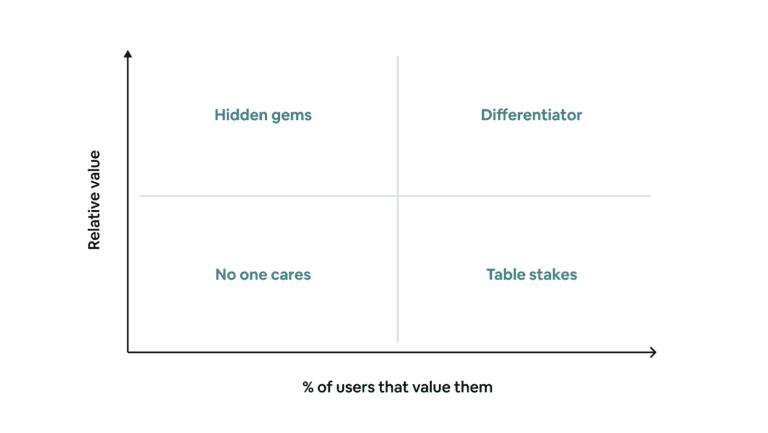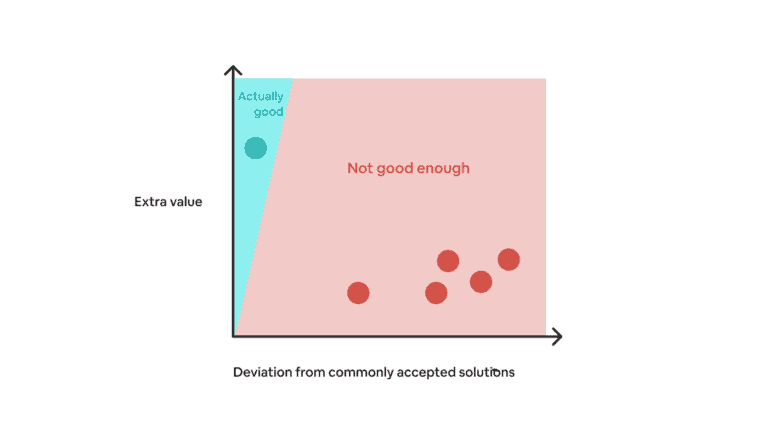If you ask ten people “What skills do I need to be a good product manager?”, you will get ten different answers.
Some will say that you need hard skills in data analytics, UI/UX design, user research, or coding. Others will say it’s all about product sense, domain expertise, and stakeholder management. This shows just how vastly different the PM role is from context to context, and how impossible it is for someone to “have it all.”
However, throughout my career, I’ve noticed three abstract yet fundamental skills that all good PMs have mastered — whether or not they realize it.
These skills are like muscles. Strong muscles alone won’t make you a good athlete, but they will make you do everything faster and better, allowing you to play the game at a higher level.
Let me dive into them one by one.
First-principles thinking
All too often, people accept information as they are told without questioning the underlying assumptions.
Good product managers, on the other hand, are always skeptical. They like to break down complex information into the most fundamental elements, examine them individually, and then piece everything together. This is called first-principles thinking.
Here is an example:
When a user requests a feature that competitors offer, a bad PM will add it straight to the backlog and copy how the competitors do it.
Good PMs don’t do that. They will continue to ask questions:
- “Who is the user?”
- “What does the user want to achieve (jobs-to-be-done), and why?”
- “How will solving this problem add to our value proposition?”
- “Why did the competitors choose this solution?”
- “What do users like and dislike about this solution, and why?”
- “What could be a better way to solve it?
This process unlocks a sea of information about a piece of seemingly straightforward feedback, which often leads to a significantly better solution. How Elon Musk built rockets at SpaceX is a classic example of reasoning from first principles.
You might be thinking, ‘But there’s no need to reinvent the wheel every time!’
That’s correct. Good PMs don’t always create solutions from scratch — that would be unnecessary. However, they never apply best practices simply because Google or Facebook do so. They make sure they understand the “why” behind each step and apply only elements that are suitable for their specific situations.
Communicating nuances
Most product decisions are not black and white. They are shades of different colors.
Unfortunately, this is not how an average person’s brain works. Humans tend to simplify things into binary outcomes, and good PMs know how to guide their teams away from this anti-pattern.
You will rarely hear them make absolute statements such as:
“Users like signing up with phone numbers, so we should make it the default option.”
Instead, they separate facts from personal opinions, and state all the possible biases and uncertainties:
“More than 60% of survey respondents prefer signing up with a phone number, so we believe that making it the default option can increase conversions. However, the survey result could have a sampling bias. That’s why we’ll validate it with an A/B test.”
The same attention to detail also extends to interpersonal communications. When communicating with teammates, good PMs choose every word intentionally to increase the effectiveness of their messages.
For example:
- “It’s better to” -> “I recommend…” (It’s only my opinion, and you don’t need to accept it.)
- “I think” -> “My hypothesis…” (I acknowledge it’s just an educated guess.)
- “Why didn’t you…” -> “Have you considered…” (I’m curious, not questioning.)
- “You should…” -> “Let us…” (We are a team.)
As trivial as these details may seem, they do compound over time to make a big difference in a product manager’s credibility within an organization.
Context switching
Very few jobs require a person to jump between as many contrasting activities as product management does.
- One minute you are working with engineers to come up with a technical workaround. The next minute you are working with designers to create a delightful experience.
- One minute you are presenting to internal stakeholders. The next minute you are listening to end-users.
- One minute you are prioritizing tasks for the coming sprint. The next minute you are creating a roadmap for the coming three years.
When being a generalist is our specialization, product managers must master context switching.
No, I’m not talking about hacks like blocking off time for deep work that anyone can implement right away.
I’m talking about the ability to quickly “switch mode” and concentrate on each task with 100% focus. There is really no shortcut to achieving this mental agility. You must deliberately train your mind every day.
In the short run, knowing how to effectively context switch can multiply your productivity. In the long run, it determines the breadth and depth of your PM skillset, which, in turn, decides whether you can make the jump to become a product leader.
Beyond the fundamentals
As I said in the beginning, these three skills simply act as the “muscles” of a PM. In other words, they are only the basics. To become a great product manager, you need many more practical, day-to-day skills in your arsenal.
To understand the full spectrum of PM competencies, I recommend that you check out these great resources:
- How To Become a Peak Product Manager by Ravi Mehta
- The Job Description For a Product Manager by Lenny Rachitsky
- PM Career Skills Map by Shreyas Doshi




